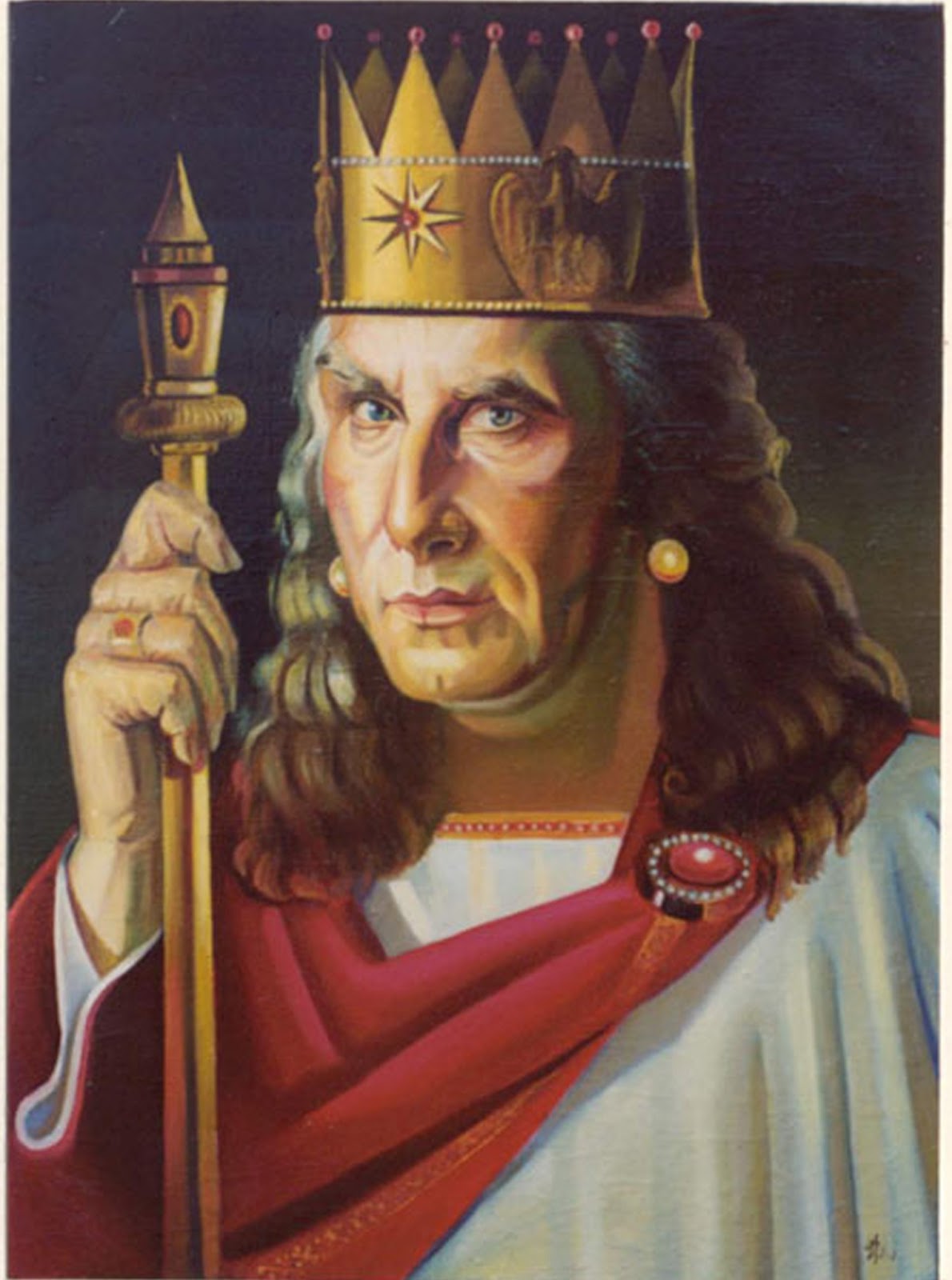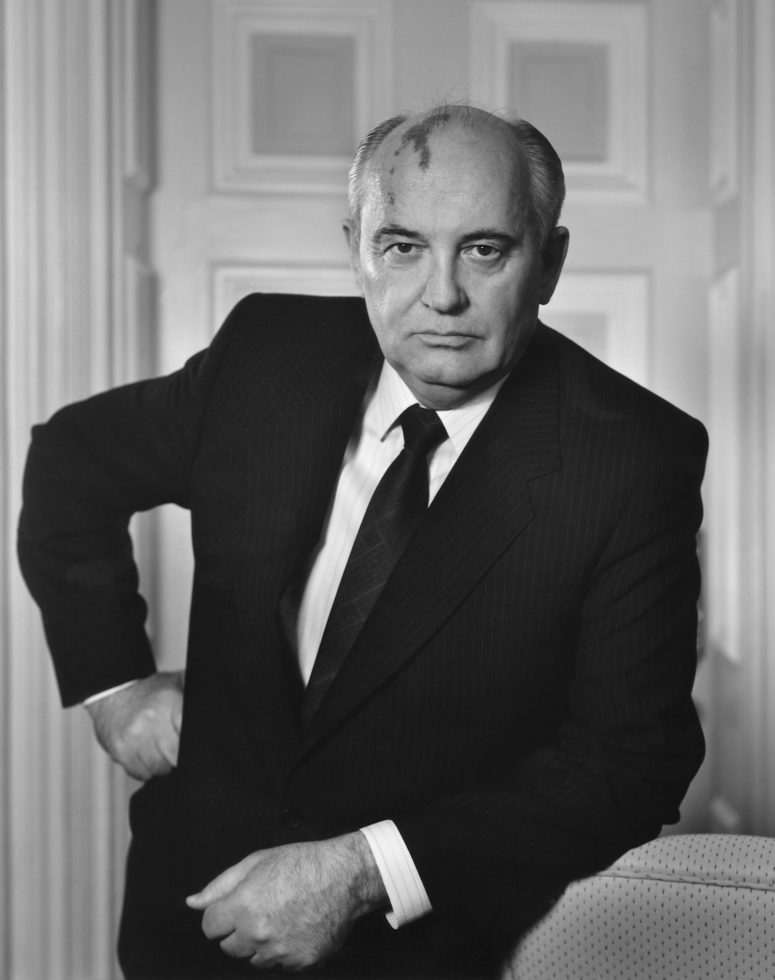Antiquity

From the Sasanid period to the Safavid period

The Sasanian Empire turned Caucasian Albania into a vassal state in 252, while King Urnayr officially adopted Christianity as the state religion in the 4th century. Despite Sassanid rule, Albania remained an entity in the region until the 9th century, while fully subordinate to Sassanid Iran, and retained its monarchy. Despite being one of the chief vassals of the Sasanian emperor, the Albanian king had only a semblance of authority, and the Sasanian marzban (military governor) held most civil, religious, and military authority. In the first half of the 7th century, Caucasian Albania, as a vassal of the Sasanians, came under nominal Muslim rule due to the Muslim conquest of Persia. The Umayyad Caliphate repulsed both the Sasanians and Byzantines from Transcaucasia and turned Caucasian Albania into a vassal state after Christian resistance led by King Javanshir, was suppressed in 667. The power vacuum left by the decline of the Abbasid Caliphate was filled by numerous local dynasties such as the Sallarids, Sajids, and Shaddadids. At the beginning of the 11th century, the territory was gradually seized by waves of Oghuz Turks from Central Asia. The first of these Turkic dynasties established was the Seljuk Empire, who entered the area now known as Azerbaijan by 1067. The pre-Turkic population that lived on the territory of modern Azerbaijan spoke several Indo-European and Caucasian languages, among them Armenian and an Iranian language, Old Azeri, which was gradually replaced by a Turkic language, the early precursor of the Azerbaijani language of today. Some linguists have also stated that the Tati dialects of Iranian Azerbaijan and the Republic of Azerbaijan, like those spoken by the Tats, are descended from Old Azeri. Locally, the possessions of the subsequent Seljuk Empire were ruled by Eldiguzids, technically vassals of the Seljuk sultans, but sometimes de facto rulers themselves. Under the Seljuks, local poets such as Nizami Ganjaviand Khaqani gave rise to a blossoming of Persian literature on the territory of present-day Azerbaijan. The local dynasty of the Shirvanshahs became a vassal state of Timur's Empire, and assisted him in his war with the ruler of the Golden Horde Tokhtamysh. Following Timur's death, two independent and rival states emerged: Kara Koyunlu and Aq Qoyunlu. The Shirvanshahs returned, maintaining a high degree of autonomy as local rulers and vassals from 861, for numerous centuries to come. In 1501, the Safavid dynasty of Iran subdued the Shirvanshahs, and gained its possessions. In the course of the next century, the Safavids converted the formerly Sunni population to Shia Islam, as they did with the population in what is modern-day Iran.The Safavids allowed the Shirvanshahs to remain in power, under Safavid suzerainty, until 1538, when Safavid king Tahmasp I (r. 1524–1576) completely deposed them, and made the area into the Safavid province of Shirvan. The Sunni Ottomans briefly managed to occupy parts of present-day Azerbaijan as a result of the Ottoman-Safavid War of 1578–1590; by the early 17th century, they were ousted by Safavid Iranian ruler Abbas I (r. 1588–1629). In the wake of the demise of the Safavid Empire, Baku and its environs were briefly occupied by the Russians as a consequence of the Russo-Persian War of 1722–1723. Despite brief intermissions such as these by Safavid Iran's neighboring rivals, the land of what is today Azerbaijan remained under Iranian rule from the earliest advent of the Safavids up to the course of the 19th century.
Contemporary history
 The resulting Treaty of Turkmenchay, forced Qajar Iranto cede sovereignty over the Erivan Khanate, the Nakhchivan Khanate and the remainder of the Lankaran Khanate, comprising the last parts of the soil of the contemporary Azerbaijani Republic that were still in Iranian hands. After incorporation of all Caucasian territories from Iran into Russia, the new border between the two was set at the Aras River, which, upon the Soviet Union's disintegration, subsequently became part of the border between Iran and the Azerbaijan Republic. Qajar Iran was forced to cede its Caucasian territories to Russia in the 19th century, which thus included the territory of the modern-day Azerbaijan Republic, while as a result of that cession, the Azerbaijani ethnic group is nowadays parted between two nations: Iran and Azerbaijan. Nevertheless, the number of ethnic Azerbaijanis in Iran far outnumber those in neighbouring Azerbaijan. After the collapse of the Russian Empire during World War I, the short-lived Transcaucasian Democratic Federative Republic was declared, constituting the present-day republics of Azerbaijan, Georgia, and Armenia. It was followed by the March Days massacres that took place between 30 March and 2 April 1918 in the city of Baku and adjacent areas of the Baku Governorate of the Russian Empire. When the republic dissolved in May 1918, the leading Musavat party declared independence as the Azerbaijan Democratic Republic (ADR), adopting the name of "Azerbaijan" for the new republic; a name that prior to the proclamation of the ADR was solely used to refer to the adjacent northwestern region of contemporary Iran. The ADR was the first modern parliamentary republic in the Muslim world. Among the important accomplishments of the Parliament was the extension of suffrage to women, making Azerbaijan the first Muslim nation to grant women equal political rights with men. Another important accomplishment of ADR was the establishment of Baku State University, which was the first modern-type university founded in the Muslim East. By March 1920, it was obvious that Soviet Russia would attack Baku. Vladimir Lenin said that the invasion was justified as Soviet Russia could not survive without Baku's oil. Independent Azerbaijan lasted only 23 months until the Bolshevik11th Soviet Red Army invaded it, establishing the Azerbaijan SSR on 28 April 1920. Although the bulk of the newly formed Azerbaijani army was engaged in putting down an Armenian revolt that had just broken out in Karabakh, Azerbaijanis did not surrender their brief independence of 1918–20 quickly or easily. As many as 20,000 Azerbaijani soldiers died resisting what was effectively a Russian reconquest. On 13 October 1921, the Soviet republics of Russia, Armenia, Azerbaijan, and Georgia signed an agreement with Turkey known as the Treaty of Kars. The previously independent Republic of Aras would also become the Nakhichevan Autonomous Soviet Socialist Republic within the Azerbaijan SSR by the treaty of Kars. On the other hand, Armenia was awarded the region of Zangezur and Turkey agreed to return Gyumri (then known as Alexandropol).During World War II, Azerbaijan played a crucial role in the strategic energy policy of the Soviet Union, with 80 percent of the Soviet Union's oil on the Eastern Front being supplied by Baku. By the Decree of the Supreme Soviet of the USSR in February 1942, the commitment of more than 500 workers and employees of the oil industry of Azerbaijan were awarded orders and medals. Operation Edelweiss carried out by the German Wehrmacht targeted Baku because of its importance as the energy (petroleum) dynamo of the USSR. A fifth of all Azerbaijanis fought in the Second World War from 1941 to 1945. Approximately 681,000 people with over 100,000 of them women went to the front, while the total population of Azerbaijan was 3.4 million at the time. Some 250,000 people from Azerbaijan were killed on the front. More than 130 Azerbaijanis were named Heroes of the Soviet Union. Azerbaijani Major-General Azi Aslanov was twice awarded the Hero of the Soviet Union.
The resulting Treaty of Turkmenchay, forced Qajar Iranto cede sovereignty over the Erivan Khanate, the Nakhchivan Khanate and the remainder of the Lankaran Khanate, comprising the last parts of the soil of the contemporary Azerbaijani Republic that were still in Iranian hands. After incorporation of all Caucasian territories from Iran into Russia, the new border between the two was set at the Aras River, which, upon the Soviet Union's disintegration, subsequently became part of the border between Iran and the Azerbaijan Republic. Qajar Iran was forced to cede its Caucasian territories to Russia in the 19th century, which thus included the territory of the modern-day Azerbaijan Republic, while as a result of that cession, the Azerbaijani ethnic group is nowadays parted between two nations: Iran and Azerbaijan. Nevertheless, the number of ethnic Azerbaijanis in Iran far outnumber those in neighbouring Azerbaijan. After the collapse of the Russian Empire during World War I, the short-lived Transcaucasian Democratic Federative Republic was declared, constituting the present-day republics of Azerbaijan, Georgia, and Armenia. It was followed by the March Days massacres that took place between 30 March and 2 April 1918 in the city of Baku and adjacent areas of the Baku Governorate of the Russian Empire. When the republic dissolved in May 1918, the leading Musavat party declared independence as the Azerbaijan Democratic Republic (ADR), adopting the name of "Azerbaijan" for the new republic; a name that prior to the proclamation of the ADR was solely used to refer to the adjacent northwestern region of contemporary Iran. The ADR was the first modern parliamentary republic in the Muslim world. Among the important accomplishments of the Parliament was the extension of suffrage to women, making Azerbaijan the first Muslim nation to grant women equal political rights with men. Another important accomplishment of ADR was the establishment of Baku State University, which was the first modern-type university founded in the Muslim East. By March 1920, it was obvious that Soviet Russia would attack Baku. Vladimir Lenin said that the invasion was justified as Soviet Russia could not survive without Baku's oil. Independent Azerbaijan lasted only 23 months until the Bolshevik11th Soviet Red Army invaded it, establishing the Azerbaijan SSR on 28 April 1920. Although the bulk of the newly formed Azerbaijani army was engaged in putting down an Armenian revolt that had just broken out in Karabakh, Azerbaijanis did not surrender their brief independence of 1918–20 quickly or easily. As many as 20,000 Azerbaijani soldiers died resisting what was effectively a Russian reconquest. On 13 October 1921, the Soviet republics of Russia, Armenia, Azerbaijan, and Georgia signed an agreement with Turkey known as the Treaty of Kars. The previously independent Republic of Aras would also become the Nakhichevan Autonomous Soviet Socialist Republic within the Azerbaijan SSR by the treaty of Kars. On the other hand, Armenia was awarded the region of Zangezur and Turkey agreed to return Gyumri (then known as Alexandropol).During World War II, Azerbaijan played a crucial role in the strategic energy policy of the Soviet Union, with 80 percent of the Soviet Union's oil on the Eastern Front being supplied by Baku. By the Decree of the Supreme Soviet of the USSR in February 1942, the commitment of more than 500 workers and employees of the oil industry of Azerbaijan were awarded orders and medals. Operation Edelweiss carried out by the German Wehrmacht targeted Baku because of its importance as the energy (petroleum) dynamo of the USSR. A fifth of all Azerbaijanis fought in the Second World War from 1941 to 1945. Approximately 681,000 people with over 100,000 of them women went to the front, while the total population of Azerbaijan was 3.4 million at the time. Some 250,000 people from Azerbaijan were killed on the front. More than 130 Azerbaijanis were named Heroes of the Soviet Union. Azerbaijani Major-General Azi Aslanov was twice awarded the Hero of the Soviet Union.Independence
 , civil unrest and ethnic strife grew in various regions of the Soviet Union, including Nagorno-Karabakh, an autonomous region of the Azerbaijan SSR. The disturbances in Azerbaijan, in response to Moscow's indifference to an already heated conflict, resulted in calls for independence and secession, which culminated in the Black January events in Baku. Later in 1990, the Supreme Council of the Azerbaijan SSR dropped the words "Soviet Socialist" from the title, adopted the "Declaration of Sovereignty of the Azerbaijan Republic" and restored the flag of the Azerbaijan Democratic Republic as the state flag. As a consequence of the failed coup which occurred in August in Moscow, on 18 October 1991, the Supreme Council of Azerbaijan adopted a Declaration of Independence which was affirmed by a nationwide referendum in December 1991, while the Soviet Union officially ceased to exist on 26 December 1991. The country now celebrates its Independence Day on 18 October. The early years of independence were overshadowed by the Nagorno-Karabakh war with the ethnic Armenian majority of Nagorno-Karabakh backed by Armenia. By the end of the hostilities in 1994, Armenians controlled up to 20 percent of Azerbaijani territory, including Nagorno-Karabakh itself. During the war many atrocities were committed including the massacres at Malibeyli and Gushchular, the Garadaghly massacre, the Agdaban and the Khojaly massacres. Furthermore, an estimated 30,000 people have been killed and more than a million people have been displaced. Four United Nations Security Council Resolutions (822, 853, 874, and 884) demand for "the immediate withdrawal of all Armenian forces from all occupied territories of Azerbaijan." Many Russians and Armenians left Azerbaijan during the 1990s. According to the 1970 census, there were 510,000 ethnic Russians and 484,000 Armenians in Azerbaijan. Current military situation in separatist Nagorno-Karabakh. In 1993, democratically elected president Abulfaz Elchibey was overthrown by a military insurrection led by Colonel Surat Huseynov, which resulted in the rise to power of the former leader of Soviet Azerbaijan, Heydar Aliyev. In 1994, Surat Huseynov, by that time the prime minister, attempted another military coup against Heydar Aliyev, but he was arrested and charged with treason. A year later, in 1995, another coup was attempted against Aliyev, this time by the commander of the OMON special unit, Rovshan Javadov. The coup was averted, resulting in the killing of the latter and disbanding of Azerbaijan's OMON units. At the same time, the country was tainted by rampant corruption in the governing bureaucracy. In October 1998, Aliyev was reelected for a second term. Despite the much improved economy, particularly with the exploitation of the Azeri-Chirag-Guneshli oil field and Shah Deniz gas field, Aliyev's presidency was criticized due to suspected election frauds and corruption. Ilham Aliyev, Heydar Aliyev's son, became chairman of the New Azerbaijan Party as well as President of Azerbaijan when his father died in 2003. He was reelected to a third term as president in October 2013.
, civil unrest and ethnic strife grew in various regions of the Soviet Union, including Nagorno-Karabakh, an autonomous region of the Azerbaijan SSR. The disturbances in Azerbaijan, in response to Moscow's indifference to an already heated conflict, resulted in calls for independence and secession, which culminated in the Black January events in Baku. Later in 1990, the Supreme Council of the Azerbaijan SSR dropped the words "Soviet Socialist" from the title, adopted the "Declaration of Sovereignty of the Azerbaijan Republic" and restored the flag of the Azerbaijan Democratic Republic as the state flag. As a consequence of the failed coup which occurred in August in Moscow, on 18 October 1991, the Supreme Council of Azerbaijan adopted a Declaration of Independence which was affirmed by a nationwide referendum in December 1991, while the Soviet Union officially ceased to exist on 26 December 1991. The country now celebrates its Independence Day on 18 October. The early years of independence were overshadowed by the Nagorno-Karabakh war with the ethnic Armenian majority of Nagorno-Karabakh backed by Armenia. By the end of the hostilities in 1994, Armenians controlled up to 20 percent of Azerbaijani territory, including Nagorno-Karabakh itself. During the war many atrocities were committed including the massacres at Malibeyli and Gushchular, the Garadaghly massacre, the Agdaban and the Khojaly massacres. Furthermore, an estimated 30,000 people have been killed and more than a million people have been displaced. Four United Nations Security Council Resolutions (822, 853, 874, and 884) demand for "the immediate withdrawal of all Armenian forces from all occupied territories of Azerbaijan." Many Russians and Armenians left Azerbaijan during the 1990s. According to the 1970 census, there were 510,000 ethnic Russians and 484,000 Armenians in Azerbaijan. Current military situation in separatist Nagorno-Karabakh. In 1993, democratically elected president Abulfaz Elchibey was overthrown by a military insurrection led by Colonel Surat Huseynov, which resulted in the rise to power of the former leader of Soviet Azerbaijan, Heydar Aliyev. In 1994, Surat Huseynov, by that time the prime minister, attempted another military coup against Heydar Aliyev, but he was arrested and charged with treason. A year later, in 1995, another coup was attempted against Aliyev, this time by the commander of the OMON special unit, Rovshan Javadov. The coup was averted, resulting in the killing of the latter and disbanding of Azerbaijan's OMON units. At the same time, the country was tainted by rampant corruption in the governing bureaucracy. In October 1998, Aliyev was reelected for a second term. Despite the much improved economy, particularly with the exploitation of the Azeri-Chirag-Guneshli oil field and Shah Deniz gas field, Aliyev's presidency was criticized due to suspected election frauds and corruption. Ilham Aliyev, Heydar Aliyev's son, became chairman of the New Azerbaijan Party as well as President of Azerbaijan when his father died in 2003. He was reelected to a third term as president in October 2013.











